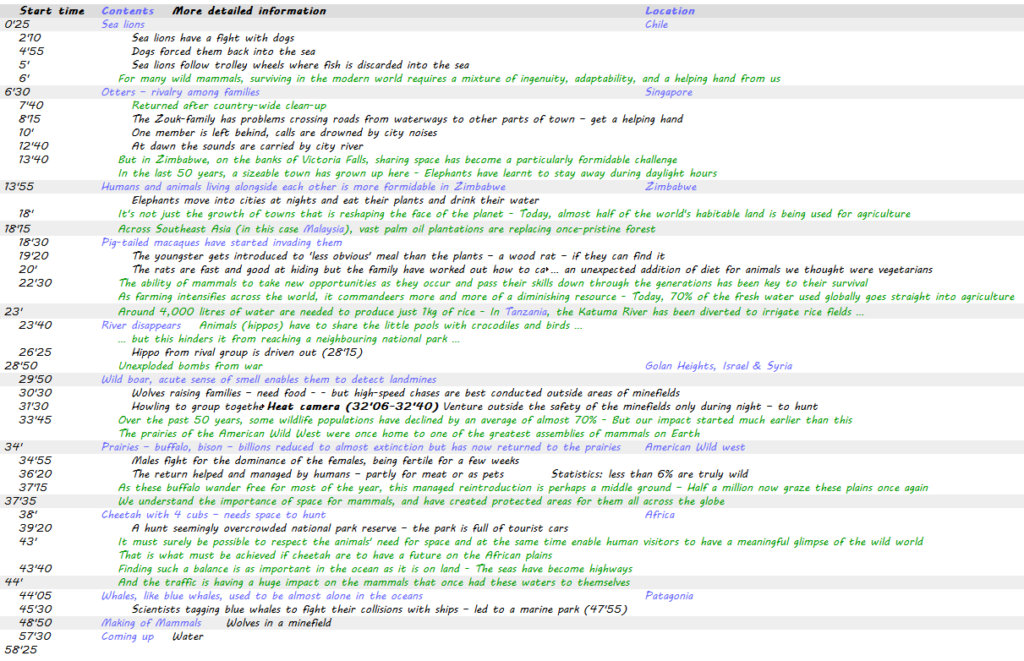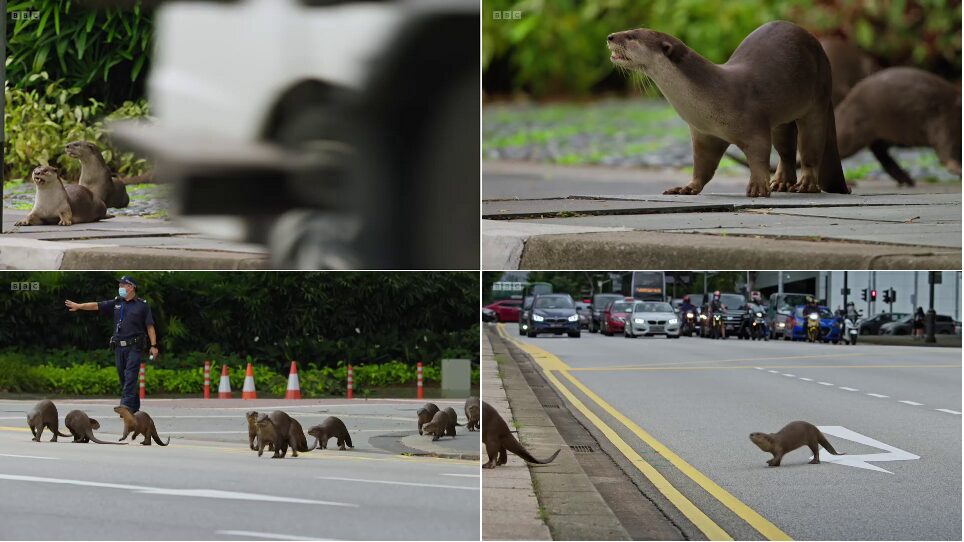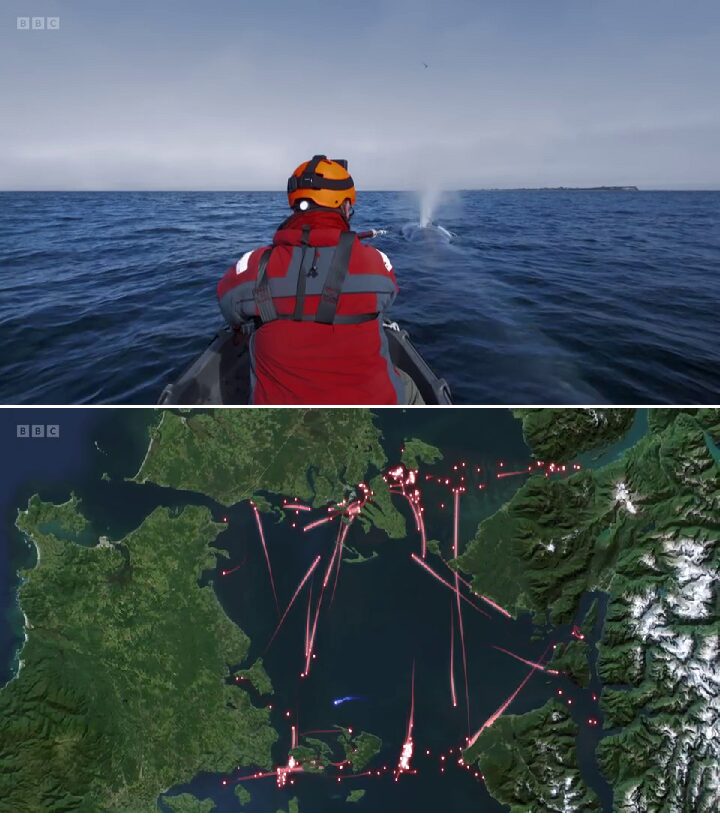Original air date: 7 April 2024
A timeline of the episode

The timeline above shows the contents of each story (in black) and Attenborough’s vitally important introductory words to the following story (in green). Filming locations are shown in blue.
Selected material:
Otters crossing a road in Singapore

Top left corner shows otters seemingly waiting for the traffic to ease down, and (top right) one of them is even looking at the next car. A traffic warden (bottom left) stops the traffic for them, and (bottom right) the traffic waits for the last one to cross (8’46-9’05).

One member got left behind while crossing the road. Scent tracking was not possible in the scent-rich and loud city so only at dawn could he hear them and reunite with them (12’55).
Elephants in Zimbabwe

Left image shows an elephant that has learnt to drink from a garden tap, the right shows an elephant eating the plants grown by humans. They only stay there for a limited time
Wolves seeking refuge from humans – in a minefield

It is very strange to have animals escape from humans to a land strewn with landmines. These animals can smell the dynamite leaking from the mines. Left image shows a mine, but the right shows a yellow sign warning of landmines with a trail where animals avoid those.
Cheetah’s hunting surrounded by cars

A cheetah hunting prey (top left) and catching it (top right). It must be tough when you’re surrounded by alien objects (cars) which seem to follow everything the animals do, the image (bottom right) shows that there are more animals being “hunted” by these tourists.
A sequence in an earlier Covid programme also dealt with this, but Attenborough’s own words say more than anything else about this matter:
Over 70 cars may encircle one kill. “Tourism has become essential to fund the protection of wild areas. Without the revenue that comes from it, this park and its cheetah would simply not be here. But having an assembly this size and this close comes at a cost. More of the cheetah’s hunts fail, and more of their kills are abandoned. In areas of high tourism, research has shown that the survival of cubs is also greatly reduced. We are in danger of loving these cheetahs to death.
It must surely be possible to respect the animals’ need for space and at the same time enable human visitors to have a meaningful glimpse of the wild world. That is what must be achieved if cheetah are to have a future on the African plains.” (41’30-43’30)
The blue whale
The blue whale has problems with ships that have made the oceans their highway so the whale has problems catching food

To help protect the whales (in Patagonia) scientists tagged one of them (top) and followed where it surfaced, to breath or feed (bottom). The blue line indicates the whale but the other lines are shipping lines. These have been changed accordingly.